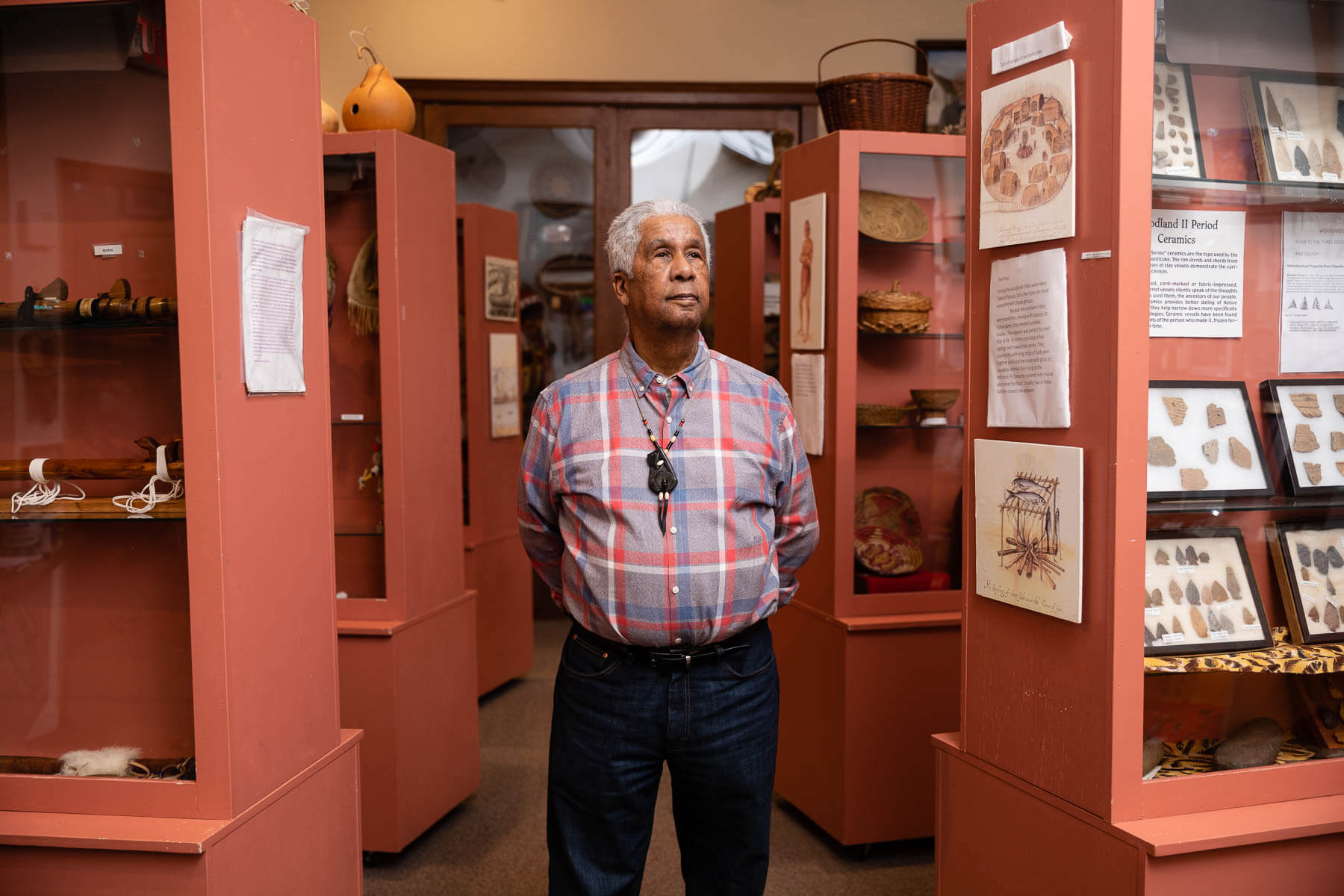A new park in Delaware honors the ‘people of the tidewater’

Overlooking a tributary of the Nanticoke River in Laurel, Delaware, a new park is taking shape, designed to honor some of the region’s first inhabitants.
Tidewater Park was dedicated in October 2021, with a ceremony attended by members of the Nanticoke Indian Tribe. Members of the Nanticoke consulted on the project, which developed over several years as a joint project including the University of Delaware, Delaware Sea Grant (DESG) and the town of Laurel.
“Nanticoke actually means ‘people of the tidewater,’” said Sterling Street, coordinator of the Nanticoke Indian Museum, who consulted on the project along with Ragghi Calentine, the tribe’s storyteller, and others, in order to determine which Nanticoke legends would be included among the play elements at the park.
Already, a giant wooden beaver, turtle and other elements have been installed. The turtle connects to the creation story for the Nanticoke, Street said. One of the elements still to be added to the park will represent the origin of our modern-day crow.
According to the legend, the crow “originally was rainbow-colored and had a pretty singing voice,” Street said. But then it lost its colors and acquired its present-day hoarse voice.
Eventually, visitors to the park will be met by a towering rainbow crow, its wings spread wide.
“I thought it was unique for a park playground for kids and that, you know, it gives them a place to play, but it also is a learning experience for them,” Street said. It will introduce visitors to things that “they would have never known if this park wasn't there, because these are things that aren't taught in school.”
Tidewater Park is part of a larger waterfront redevelopment project called The Ramble, which is serving to revitalize downtown Laurel and increase tourism by reconnecting communities to the water and local parks. The project has also added green space and a kayak launch along Broad Creek, as well as wetlands and green infrastructure to manage stormwater.
A deeper dive into Nanticoke history

While Tidewater Park will serve as an introduction to the Nanticoke, travelers may be inspired to learn even more at a museum in nearby Millsboro, Delaware. Since 1984, the Nanticoke Indian Museum has operated out of a building that once functioned as the Nanticoke’s schoolhouse.
On display are local artifacts like arrowheads dating back to roughly 10,000 B.C., as well as chronicles of the Nanticoke’s vibrant modern history. A wall of posters, for example, honors the military veterans of the Nanticoke community who have served in World War II and other conflicts.
“Our people have served in every war that ever was in the United States,” Street said. “From the Revolutionary War on up until now.”
Today there are about 2,000 members of the Nanticoke Indian Tribe, living in Delaware’s Sussex County and across the United States. Events at the museum include Heritage Day, usually held in May, and Native American Day in November. And every year, Nanticoke dancers perform at the Nanticoke Riverfest, typically held in Seaford in July.
Though dispersed geographically, the Nanticoke’s connection to the Nanticoke River remains strong.
“The river in the spring and summer was our livelihood,” Street said. “One of our themes for one of our pow wows was ‘water is life’—because that’s what sustains us.”

Comments
Kudos to the town of Laurel for having the tenacity and foresight to honor the First People of the land on which it stands. May the knowledge enrich the lives of the next 7 generations and beyond.
Thank you Sterling and Ragghi for sharing yourselves and your culture to help make this happen.
The Nanticoke Museum is a Delaware treasure!
Went to the museum this year and met Sterling. What a great story! I learned so much about the tribe.
Sterling Street is my first cousin; my mother, Evelyn Street Gardner's nephew.
I'm extremely proud of him and his tireless work as our family's history, as well as other family members.
In giving honor to my Great Grandmother Johnson, Grandmother, and Father Julius I look forward to returning to Delaware and attending the upcoming events.
That’s my brother! Am proud of him, and pleased that the townspeople of Laurel are interested in and willing to honor the land and culture where our tribal members continue to inhabit and thrive.
Thank you!
Your comment has been received. Before it can be published, the comment will be reviewed by our team to ensure it adheres with our rules of engagement.
Back to recent stories